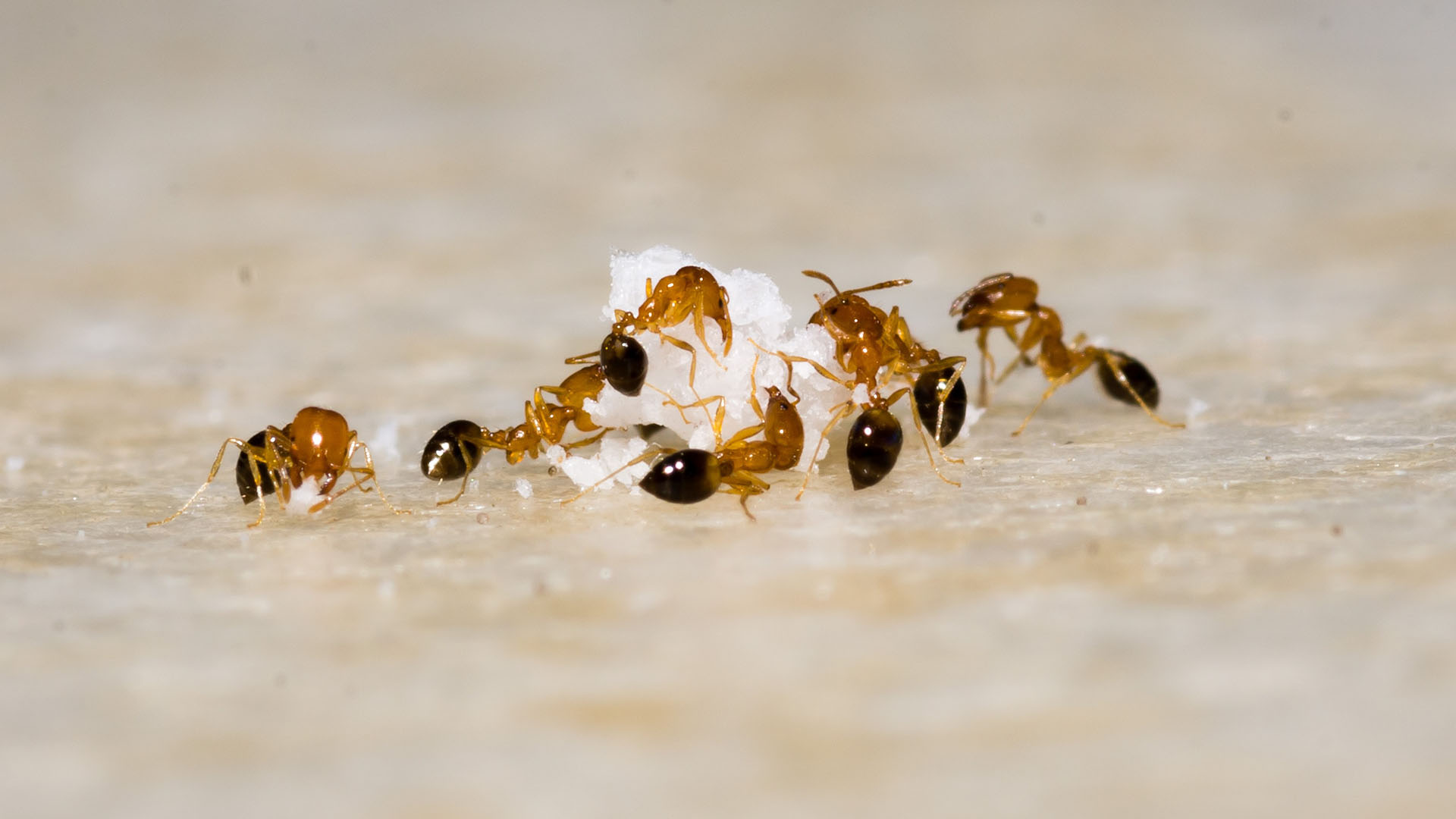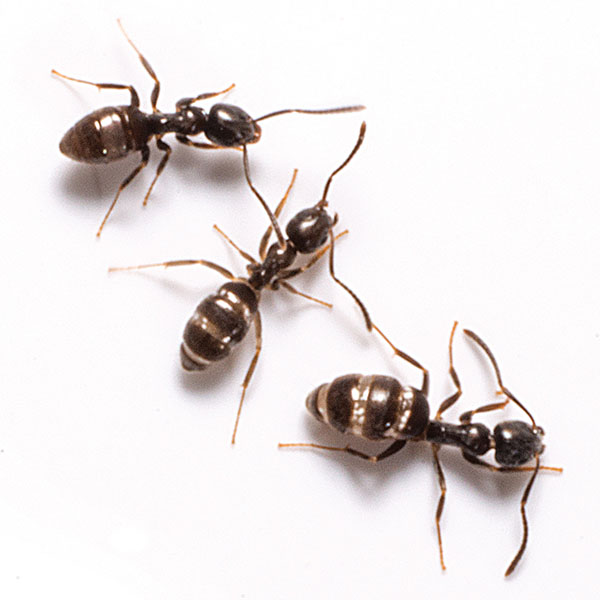While homeowners across New England enjoy the summer weather, they also must contend with increased pest activity. Annoying when picnicking and camping, ants, the most common home invader, also pose health and property risks as they destroy wood and contaminate food items in homes and businesses.
With more than 700 types of ant species in the United States, it’s not surprising that these nuisance pests can quickly become a source of disgust, frustration and concern for homeowners and business owners alike. Below, we discuss some of the most common species you are likely to encounter indoors, and offer tips to prevent and treat infestations.
Odorous House Ants
These ants get their name from the unpleasant odor they give off when crushed, often described as smelling like a rotten coconut. They can enter the house through small cracks in the foundation and typically nest in wall voids and crevices and under flooring. They prefer sweet foods and tend to contaminate food products.
Pharaoh Ants
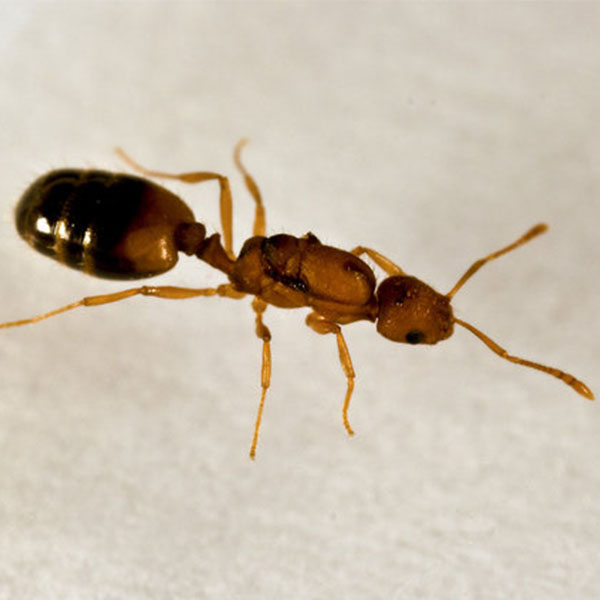
Tiny pharaoh ants prefer sweets, but also consume grease and even shoe polish. They live in extremely large colonies and keep warm near artificial heating sources like baseboard heaters and ovens. Their nests are often found in walls, refrigerator insulation and other undisturbed indoor spaces. This is one of the few ant species known to transmit diseases.
Carpenter Ants
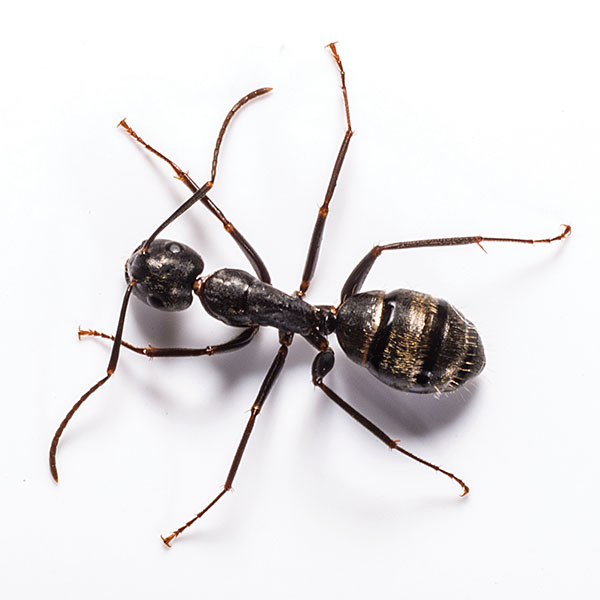
This species hollows out nests in both dry and moist wood, though they prefer the latter. They can be particularly hard to remove since their nests can be more difficult to locate and contain up to 5,000 members. Carpenter ants can cause serious damage to structures made from wood, which they excavate to create galleries for nesting.
Pavement Ants
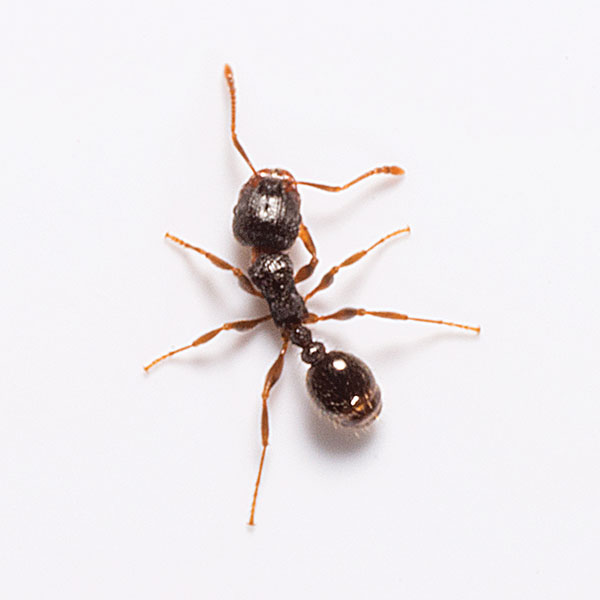
Pavement ants always nest outdoors in the soil and underneath pavement or concrete, making mounds of soil between pavers, in cracks and on lawns. However, they will come inside to forage for food, so you’ll see them or notice dirt popping up in odd places.
Ant Prevention & Treatment
To help prevent ant infestations, take the following steps:
- Eliminate moisture or standing water near or inside the home. Most ants thrive in warm and moist conditions.
- Eliminate potential food sources with ongoing cleaning. This mean regularly vacuuming floors and cleaning surfaces, and addressing spills and crumbs promptly. Also, store all food in sealed containers.
- Fill any cracks in your foundation or other openings where ants could gain access. Be sure window and door screens are in good repair, too.
- Keep wood piles, shrubbery and branches away from your home.
Despite your best efforts, you may find yourself with an occasional ant infestation. Most of the time, you’ll know you have a problem because you will spot the ants themselves. With carpenter ants, you may also spot small piles of sawdust, hear faint rustling behind your walls or notice that wooden beams sound hollow when you tap on them.
While there are a number of products you can buy to treat an infestation, many of them only kill some of the colony and not the larvae and pupae. Professional extermination services are your best bet. Our experts are trained to identify the specific type of ant invader, find the nest and determine a treatment solution that will get rid of the entire colony. If you see signs of this most common home invader, give us a call right away.

